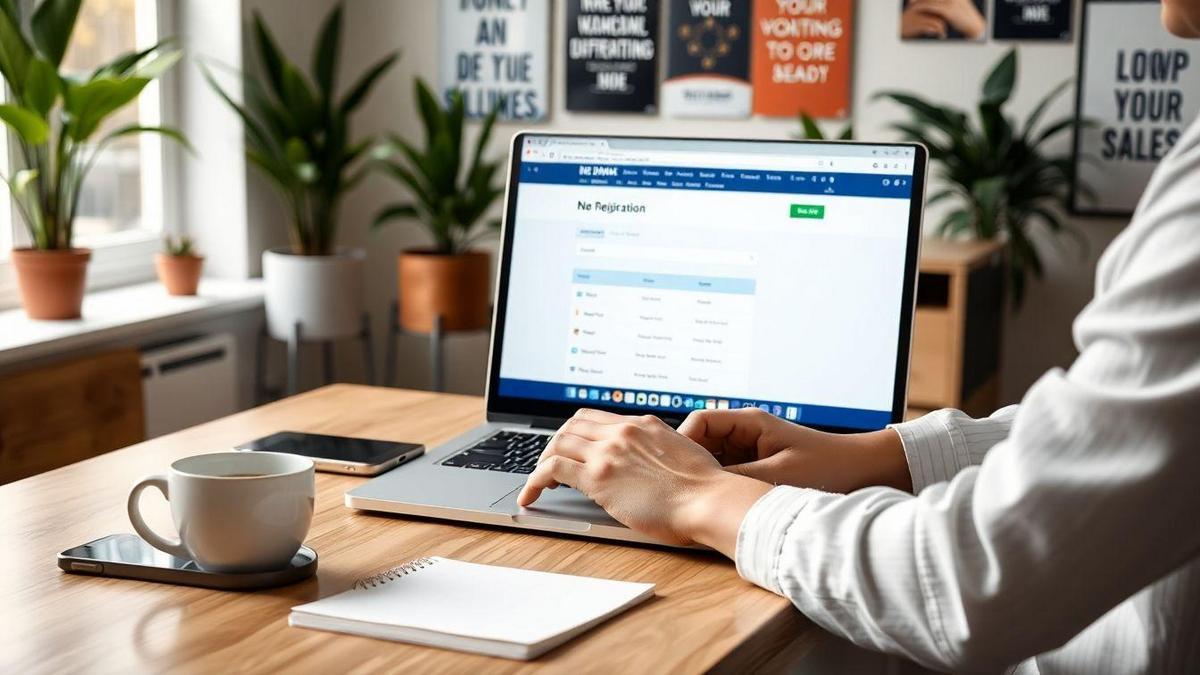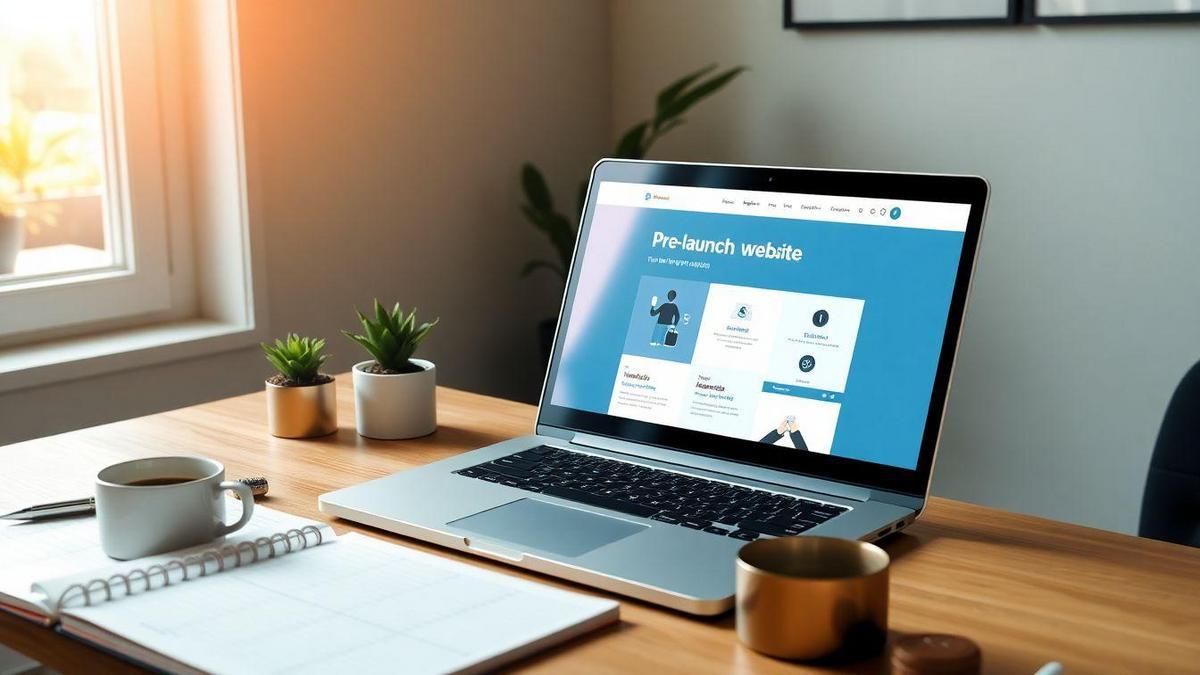When it comes to everything you need before launching your first site, getting prepared is key. In this article, you’ll discover essential tools, thoughtful tips, and the must-have software that will help your dream website go live smoothly. From choosing the right design to ensuring your content shines, we’ll cover how to avoid common mistakes along the way. So, let’s dive in and get you ready to hit that launch button!

Essential Tools for Website Launch
Must-Have Software for Your Site
When you’re ready to launch your first website, having the right software is crucial. Here are some must-have tools that can make your life easier:
- Text Editor: Tools like Notepad or Sublime Text help you write and edit code.
- Graphics Software: Programs like Canva or Adobe Photoshop let you create stunning visuals.
- Analytics Tools: Use Google Analytics to track how visitors interact with your site.
Top Platforms for Building Your Website
Choosing a platform to build your site can feel like picking a favorite ice cream flavor. Here are some top options to consider:
| Platform | Best For | Ease of Use | Cost |
|---|---|---|---|
| WordPress | Blogs and content-heavy sites | Moderate | Free (with extras) |
| Wix | Quick, drag-and-drop sites | Easy | Free (with ads) |
| Squarespace | Stylish portfolios | Easy | Paid |
| Shopify | E-commerce | Easy | Paid |
Choosing the Right Tools for Your Needs
Now, how do you choose the right tools for your website? It’s all about understanding your goals. Ask yourself:
- What type of website do you want?
- Do you plan to sell products or share content?
- How much control do you want over the design?
By answering these questions, you can pick tools that fit your needs like a glove. Remember, you want your website to reflect your vision, so choose wisely!
Website Launch Checklist
Key Steps to Take Before You Go Live
Before you hit that “Launch” button, there are a few key steps you should take. Think of it as packing your bags before a trip. You want to make sure you have everything you need before launching your first site. Here’s what to do:
- Test Your Site: Click around and make sure everything works. Check all links, forms, and buttons. If something is broken, fix it!
- Mobile Optimization: Your site should look great on phones and tablets. Test it on different devices to see how it appears.
- SEO Basics: Add keywords to your content, write meta descriptions, and use alt tags for images. This helps people find you on search engines.
- Set Up Analytics: Use tools like Google Analytics to track visitors. This way, you can see what works and what doesn’t.
- Backup Your Site: Always have a backup. If something goes wrong, you’ll want to restore it quickly.
Common Mistakes to Avoid
Launching a site can feel like running a marathon. You don’t want to trip on the last lap! Here are some common mistakes to steer clear of:
- Skipping Testing: Don’t skip testing your site. It’s like going on a road trip without checking the map.
- Ignoring Mobile Users: Many people browse on their phones. If your site isn’t mobile-friendly, you might lose visitors.
- Not Having Clear CTAs: Make sure your Call-to-Actions are clear. Tell visitors what you want them to do next, like “Sign Up” or “Buy Now!”
- Forgetting About Security: Protect your site with SSL certificates. This keeps your visitors’ data safe.
Your Complete Pre-Launch Checklist
Here’s a handy checklist to help you remember everything you need before launching your first site:
| Task | Completed (Yes/No) |
|---|---|
| Test all links | |
| Optimize for mobile | |
| Add SEO keywords | |
| Set up Google Analytics | |
| Backup your site | |
| Check site speed | |
| Review content for errors | |
| Ensure all images are optimized |
Make sure to go through this checklist. It’s your safety net before you dive into the online world!

Domain Registration Best Practices
How to Choose the Perfect Domain Name
Choosing a domain name is like picking a name for your baby. It’s important and should reflect what you stand for! Here are a few tips to help you find that perfect fit:
- Keep it Short: Aim for a name that’s easy to remember. A shorter name is often easier to type and less likely to be misspelled.
- Make it Relevant: Your domain should give visitors a hint about what your site is about. If you’re starting a bakery, something like “SweetTreats.com” can work wonders.
- Avoid Numbers and Hyphens: These can confuse people. Stick to letters only!
- Think Long-Term: Choose a name that can grow with you. If you start a blog today, but plan to sell products later, pick a name that fits both.
Tips for Securing Your Domain
Once you’ve found your dream domain name, it’s time to lock it down. Here are some tips to help you secure it:
- Register Quickly: The best names can disappear fast. If you find one you love, don’t wait!
- Use a Reputable Registrar: Choose a well-known company for registration. Some popular choices include GoDaddy, Namecheap, and Google Domains.
- Consider Privacy Protection: This keeps your personal information safe from prying eyes. Most registrars offer this service.
- Set Up Auto-Renewal: You don’t want to lose your domain because you forgot to renew it. Auto-renewal takes that stress off your plate.
Navigating Domain Registration Safely
When registering your domain, safety is key. Here’s how to navigate this process without a hitch:
- Read the Terms: Before you click that buy button, make sure you read the terms and conditions. It’s like reading the fine print on a contract.
- Watch for Hidden Fees: Some registrars may have extra charges. Be aware of what you’re paying for.
- Keep Your Account Secure: Use a strong password and enable two-factor authentication if available. It’s like locking your front door at night.
| Tip | Description |
|---|---|
| Keep it Short | Short names are easier to remember and type. |
| Use a Reputable Registrar | Choose a trustworthy company to avoid issues later. |
| Consider Privacy Protection | Protect your personal info from public view. |
| Set Up Auto-Renewal | This prevents accidental loss of your domain. |
Website Hosting Options
Types of Hosting Services Explained
When you’re diving into the world of website creation, hosting is a key player. Think of it as the home for your website. Here are the main types of hosting services you might consider:
| Type of Hosting | Description |
|---|---|
| Shared Hosting | Your site shares a server with others. It’s cost-effective but can slow down if traffic spikes. Great for beginners! |
| VPS Hosting | A step up from shared. You still share a server, but you have your own dedicated space. More control and speed! |
| Dedicated Hosting | You get an entire server just for your site. It’s powerful and customizable but can be pricey. Ideal for large sites! |
| Cloud Hosting | Your site runs on a network of servers. It’s flexible and can handle traffic surges well. Perfect for growing businesses! |
| Managed WordPress Hosting | Specifically designed for WordPress sites. It takes care of updates and backups for you. Super convenient! |
Factors to Consider When Choosing Hosting
Picking the right hosting service can feel like finding a needle in a haystack. Here are some key factors to keep in mind:
- Budget: How much are you willing to spend? Shared hosting is usually the cheapest.
- Traffic: Expecting a lot of visitors? Go for VPS or dedicated hosting.
- Technical Skills: Are you tech-savvy? Managed hosting can save you time if you’re not.
- Support: Look for hosting with great customer service. You want help when things go south!
- Scalability: Will your site grow? Choose a host that can grow with you.
Finding the Best Hosting for Your Site
To find the best hosting, start by assessing your needs. Ask yourself:
- What type of website are you building? (Blog, e-commerce, portfolio, etc.)
- How much traffic do you expect?
- What’s your budget?
Once you have answers, you can compare hosting services based on the factors above. It’s like shopping for shoes. You want the right fit for your feet!
In short, the right hosting can make or break your site. So, take your time, do your research, and pick a service that matches your vision.

Website Design Considerations
Importance of User-Friendly Design
When you think about creating a website, user-friendly design is key. A site that’s easy to use keeps visitors happy. If they can find what they need quickly, they’re more likely to stick around. Imagine walking into a store where everything is in the right place. You’d feel comfortable and would want to explore more, right? The same goes for your website.
A user-friendly design can lead to more sales and better engagement. If your visitors struggle to navigate your site, they might leave in frustration. A simple layout with clear menus and buttons can make a world of difference.
Key Design Elements to Include
When designing your website, there are several key elements you should include. Here’s a handy table to keep in mind:
| Element | Purpose |
|---|---|
| Clear Navigation | Helps users find what they need easily. |
| Responsive Design | Ensures it looks good on all devices. |
| Fast Loading Times | Keeps visitors from getting impatient. |
| Consistent Branding | Builds trust and recognition. |
| Contact Information | Makes it easy for visitors to reach you. |
Each of these elements plays a vital role in creating a website that feels welcoming and easy to use. Think of them as the building blocks of your site.
Creating a Visually Appealing Website
A visually appealing website grabs attention. Use colors, images, and fonts that reflect your brand. But don’t go overboard! Too many colors or flashy designs can confuse visitors.
Here are some tips for creating a visually appealing site:
- Choose a Color Palette: Stick to 2-3 main colors to keep things cohesive.
- Use High-Quality Images: Blurry or pixelated images can turn people away.
- Pick Easy-to-Read Fonts: Avoid fancy fonts that are hard to read.
By focusing on these aspects, you can create a website that not only looks good but also makes visitors feel at home.
Content Creation Before Launch
Types of Content You Should Prepare
Before you hit that launch button, it’s crucial to have a solid mix of content ready to go. Here’s a quick list of what you should consider:
- Homepage Content: This is your first impression. Make it count!
- About Page: Share your story. Let people know who you are and what you stand for.
- Blog Posts: These can attract visitors and keep your audience engaged. Aim for a few posts to start.
- Product or Service Descriptions: If you’re selling something, make sure your descriptions are clear and enticing.
- FAQs: Answer common questions to help visitors and reduce confusion.
Tips for Writing Engaging Content
Writing content that grabs attention is key. Here are some tips to help you write like a pro:
- Know Your Audience: Think about who will read your content. What do they care about?
- Use Simple Language: Keep it straightforward. Avoid jargon that could confuse readers.
- Tell a Story: People love stories! Share personal experiences or anecdotes that relate to your content.
- Use Visuals: Pictures and videos can make your content pop. They break up text and keep readers interested.
- Call to Action: Encourage readers to take the next step. Whether it’s signing up for a newsletter or checking out a product, make it clear!
Planning Your Content Strategy Ahead
Having a content strategy is like having a roadmap. It guides you through the process of creating and sharing content. Here’s how to plan it:
| Step | Action |
|---|---|
| Set Goals | What do you want to achieve with your content? |
| Choose Topics | What subjects will resonate with your audience? |
| Create a Schedule | Plan when and how often you’ll post content. |
| Review and Adjust | After launching, check what works and what doesn’t. |
By planning ahead, you’ll have everything you need before launching your first site. You’ll feel more confident and ready to engage your audience right from the start.

Website SEO Preparation
Basics of SEO for New Websites
When you’re diving into website creation, understanding SEO (Search Engine Optimization) is key. Think of SEO as the bridge that helps your site get noticed by search engines like Google. Here’s what you need to know:
- Keywords: These are the words or phrases people type into search engines. Use tools like Google Keyword Planner to find the right ones for your site.
- Content: Your content should be valuable and relevant. Write for your audience, not just for search engines.
- Meta Tags: These are snippets of text that describe your content. They help search engines understand what your page is about.
Here’s a simple table to illustrate some basic SEO elements:
| SEO Element | Description |
|---|---|
| Keywords | Words that users search for |
| Content | Information that provides value to visitors |
| Meta Tags | Descriptions that help search engines categorize |
How to Optimize Your Site for Search Engines
Optimizing your site isn’t rocket science, but it does require some thought. Here are some steps to get you on the right path:
- Choose a Good Domain Name: Make it memorable and related to your content.
- Create Quality Content: Regularly update your site with fresh and engaging material.
- Mobile-Friendly Design: Most users browse on their phones, so make sure your site looks great on all devices.
- Fast Loading Speed: If your site takes forever to load, visitors will bounce. Use tools like Google PageSpeed Insights to check your speed.
Starting Your SEO Journey Right
Starting your SEO journey right is crucial for success. Here are some tips that can help:
- Research Competitors: Look at what similar sites are doing. Learn from their successes and mistakes.
- Utilize Social Media: Share your content on platforms where your audience hangs out. This drives traffic back to your site.
- Monitor Your Progress: Use tools like Google Analytics to track your site’s performance. Adjust your strategies based on what the data tells you.
By focusing on these strategies, you’ll be well on your way to everything you need before launching your first site.
Marketing Plan for New Website
Strategies to Promote Your Site
When you launch your website, you want to make waves! Here are some simple strategies to get the word out:
- Social Media: Use platforms like Facebook, Instagram, and Twitter. Share sneak peeks and updates. Create engaging posts that make people want to follow you.
- Email Marketing: Build an email list before your launch. Send out newsletters with exciting news and exclusive content.
- Collaborations: Partner with influencers or bloggers in your niche. They can help spread the word to their followers.
- SEO: Optimize your site for search engines. Use keywords related to your content to help people find you easily.
Building an Audience Before Launch
Before your website goes live, start building a community! Here’s how:
- Create a Landing Page: This page can collect emails and give visitors a taste of what’s coming.
- Engage on Social Media: Join groups or forums related to your niche. Share your insights and connect with potential visitors.
- Host a Giveaway: Everyone loves free stuff! A simple contest can attract attention and grow your email list.
Creating a Buzz Around Your New Site
You want people talking about your site before it even launches! Here are some fun ideas to create buzz:
- Teaser Campaign: Drop hints about what’s coming. Use intriguing images or videos to spark curiosity.
- Countdown Timer: Add a countdown on your landing page. It builds excitement and anticipation.
- Launch Party: Consider hosting a virtual launch party. Invite your audience to join, learn about your site, and win prizes!

Pre-Launch Website Tips
Testing Your Site for Issues
Before you hit that big launch button, it’s crucial to test your site. Think of it like a dress rehearsal before the big show. You want everything to go off without a hitch! Here’s what you should check:
- Broken Links: Click around your site. If you find any links that don’t work, it’s like a dead end on a road trip. Fix them!
- Loading Speed: If your site takes too long to load, visitors might leave before they even see what you offer. Use tools like Google PageSpeed Insights to check this.
- Mobile Friendliness: With so many people using phones, make sure your site looks good on all devices. Test it on a smartphone and tablet.
- Browser Compatibility: Check your site on different browsers like Chrome, Firefox, and Safari. You want it to shine everywhere!
| Test Type | Tools to Use | What to Look For |
|---|---|---|
| Broken Links | Broken Link Checker | Any links that lead to a 404 page |
| Loading Speed | Google PageSpeed Insights | Load time should be under 3 seconds |
| Mobile Friendliness | Google Mobile-Friendly Test | Responsive layout across devices |
| Browser Compatibility | BrowserStack | Consistent appearance and function |
Gathering Feedback Before Going Live
Once your site is looking good, gather some feedback! You might think your site is perfect, but a fresh pair of eyes can spot things you missed. Here’s how to get valuable insights:
- Ask Friends and Family: They can give honest opinions. Ask them to navigate your site and note any issues.
- Use Online Surveys: Tools like Google Forms can help you gather feedback easily. Ask specific questions about design, usability, and content.
- Beta Testing: Invite a small group of users to test your site before launch. They can provide feedback on their experience.
Ensuring a Smooth Launch Experience
When you finally launch, you want it to feel like a celebration! Here are a few tips to make it smooth:
- Plan Your Launch Date: Pick a day and time when your audience is most active. You want to capture their attention.
- Promote on Social Media: Build excitement! Share sneak peeks and countdowns to get people talking.
- Monitor Your Site After Launch: Keep an eye on traffic and user behavior. If any issues pop up, be ready to fix them fast.
Remember, you only get one chance to make a first impression. So, take these steps seriously!
Frequently Asked Questions
What is the first step to launch my site?
Start by planning your site! Think about what you want to share or sell. Create a list of your ideas.
Do I need a domain name?
Yes! A domain name is your site’s online address. Choose something catchy and easy to remember.
What hosting options should I consider?
Look for a hosting service that is reliable. Check for speed, support, and prices. Find what fits your needs best.
How do I design my website?
Use templates or website builders like Wix or WordPress. They help you create a great look without needing to code!
What else is important before I launch?
Everything you need before launching your first site includes testing your site. Make sure all links work and it looks good on mobile!

Lucas is a technical SEO expert who has optimized over 200 websites and managed Google AdSense and Ad Manager campaigns since 2016. At ReviewWebmaster.com, he shares strategies to boost organic traffic and monetize every single visit.
Types of articles he writes:
-
“How to Increase Your Blog’s RPM with Simple Tweaks”
-
“Technical SEO Checklist for WordPress Sites”
-
“Complete Beginner’s Guide to Google Ad Manager”
Why it works:
Lucas brings a confident, analytical, and performance-driven voice to the site — perfect for readers looking for actionable, results-oriented content.
